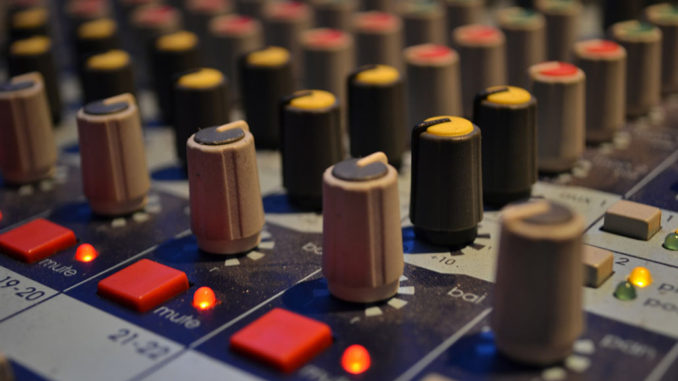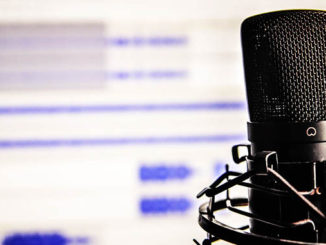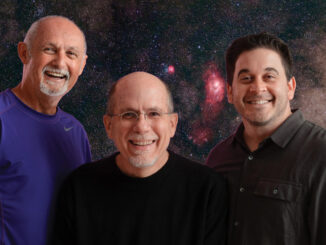
by Dean Okrand, CAS
Even though I grew up in Los Angeles, I had no family or close friends connected to the film or television business. But I did have a sense of labor unions and how they impacted people’s lives.
In the late 1930s, my father, an attorney, worked for a small firm that had two clients, all the CIO unions in Southern California (long before the CIO merged with the AFL) and the ACLU. My family would go to the Amalgamated Clothing Workers Christmas Party every year. I would hear stories about famous members of Local 47, the musicians union. National labor issues were often talked about around the dinner table, as were civil rights and first amendment issues. Unions were a part of my upbringing and would mold how I looked at life.
During high school (the late 1960s) the Vietnam War was raging and the music scene was exploding. I volunteered at a non-commercial radio station in Los Angeles (KPFK) that was on the cutting edge of a new and unique cultural and arts scene. I found myself hanging out there a lot and became fascinated with broadcasting in general and the engineering aspect in particular.
At age 16, after volunteering in the news room writing copy, I obtained an FCC license that allowed me to run the broadcast board. I even finagled my own “middle of the night rock music show” that I engineered and hosted. In college, where I studied American history, I worked at the campus radio station and, after graduating from UC Berkeley, volunteered at KPFA in Berkeley (KPFK’s sister station). While there, I engineered live music, both in-house and remotes from various Bay Area music clubs, ran the broadcast board and produced documentaries. Sound production had hooked me, and I knew I wanted to pursue this as a career.
I worked at a non-union facility and was beginning to see the differences in pension (we had none) and medical benefits, pay scales, and other working conditions between non-union and union facilities doing the same work for the same clients. For me, it was a no-brainer to contact IA 695.
At age 25, I moved back to LA in order to find work as an engineer in a recording studio. After about nine months of knocking on doors, I finally landed a job as a second engineer (sort of like a recordist) at Sunwest Recording. Sunwest was a pretty hot recording studio and the new owner wanted to branch out into new technologies. It was one of the first studios to post sound for videotape on multi-track tape recorders. For the first time, there were no machines with sprocket holes — only tape. Similar SMPTE time code on both the multi-track and video recorders were compared by a synchronizer that controlled the transports of the machines in order to keep them in dead sync. This worked…most of the time.
The infancy of mixing on tape required innovation. Tape mixers not only mixed, but built all the elements. We pre-laid sound effects and music. There was minimal dialogue editing. Re-synching original audio was done by hand. We dabbled in Foley and ADR. And we mixed the shows to the same multi-track on which all the elements lived. Moving elements during a mix was cumbersome at best. We mixed to a mono-composite track, there was no automation, and corrections could sometimes be quite dicey. But we learned and the craft advanced.
Sunwest is where my two worlds collided. I worked at a non-union facility and was beginning to see the differences in pension (we had none) and medical benefits, pay scales, and other working conditions between non-union and union facilities doing the same work for the same clients. For me, it was a no-brainer to contact IA 695 (the only sound local at the time). Shortly thereafter, a vote was taken by the employees and the owners signed the IA Basic Agreement.
Being a member of IATSE opened up a whole new world of job opportunities. A couple of years later, I moved over to Glen Glenn Sound. I recorded for Tommy Huth, who was an excellent teacher and a very busy mixer. In fact, he had too much work and, since all of his clients knew me, it made sense to bump me up to mixer to take some workload off of Huth.
I must say, it was a rough start for me. Sound moves really fast while sitting at the console! There was still no automation, and I was not very happy with some of my early work. But I loved what I did, persevered and am very proud of many of the programs and sound jobs I have mixed — from early videotape shows such as Real People to The A-Team (film mix) and Northern Exposure (three 24-track multi-tracks) to Terra Nova and Modern Family (entirely Pro Tools on Pro Tools surfaces). I love listening to the finished work that the entire sound team creates.
I have been a re-recording mixer for 33 years, and the idea of turning a production track into a full, complete and seamless sound track — that hopefully enhances and advances the project — still fascinates and excites me.





